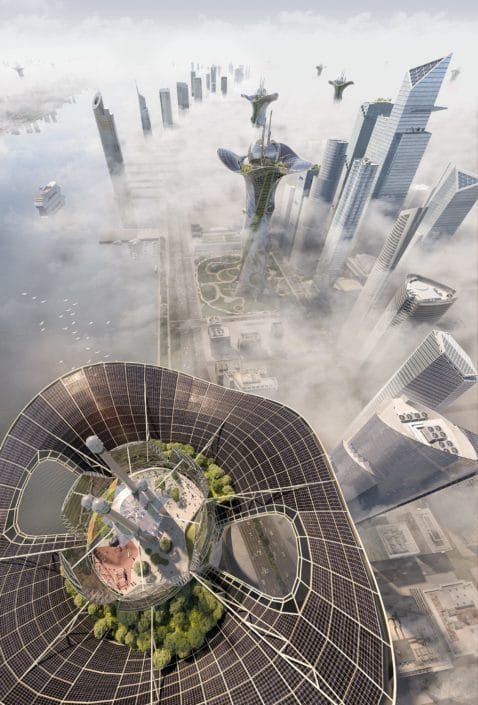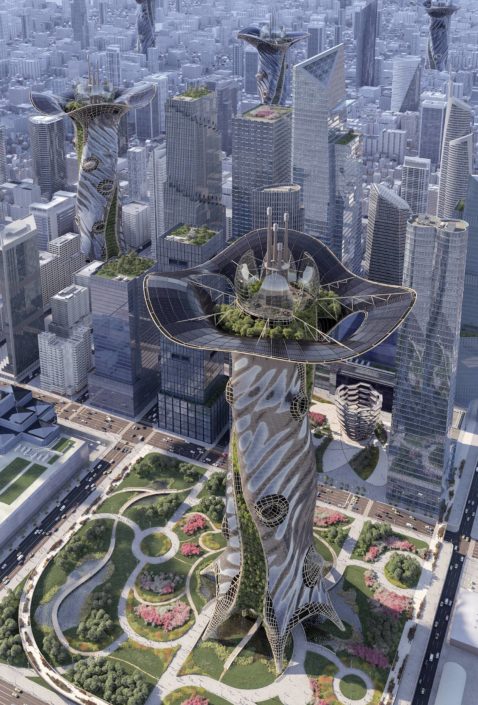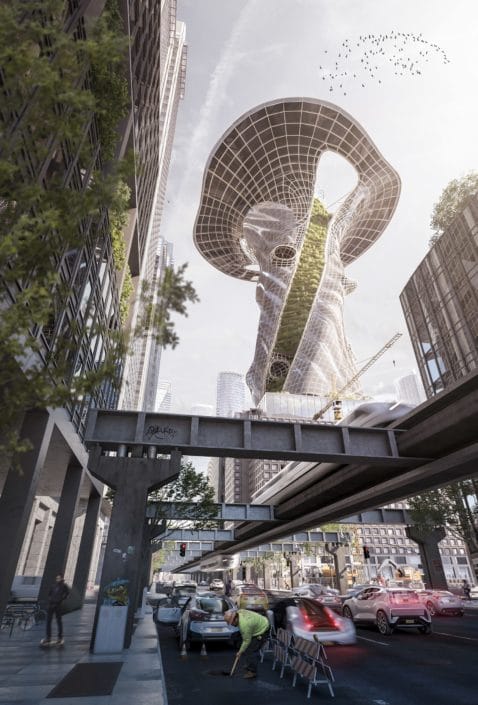GOALS
My main goal when creating images of NYC of 2040 was to create attractive and imagination arousing vision. At the same time I asked myself: ‘what can I offer to people from the future to make their lives better, considering the fact that man is moving further away from the nature he comes from, being in conflict with her, occupying larger and larger areas for development and arable fields. Currently, cultivated fields occupy an area the size of South America. This foreign to nature, artificial environment has been created and developed for several thousand years. Process of transition from nomadism to settlement and food production began about 10,000 BC. Agriculture has led us to the place where we are now, place where industrialized agriculture can produce more than enough food to meet the needs of the world population (assuming equal availability and no waste), which currently stands at around 7.6 billion. Despite the important role agriculture has played in human history, has created many problems over the years.
Cutting down forests, creating space for arable land, man has largely deformed the environment. The heavily reduced number of forests reduced carbon absorption capacity of our planet, at the same time we extract it from the ground and burn it, releasing quickly into the carbon cycle resources removed from it by nature for tens and hundreds of millions of years. With industrialization, development of communication and food preservation technology, distance between source and recipient has increased dramatically, and ties between cities and food production has weakened. For many years there was a conviction that food production and the idea of clean, hygienic and modern cities are mutually exclusive. Local production has disappeared and agriculture has become oriented towards global markets. Food is often transported to consumers from thousands of kilometers away, generating large amounts of CO2. Pesticides and fertilizers that can cause water and soil pollution are another environmental risk. In addition, agriculture is estimated to account for 70% of the world’s drinking water consumption
SOLUTION
What is the solution to make life of citizens better and reduce the ecological footprint of human activity? The answer can be network of vertical farms that refers to the concept of agrourbanism (including the Garden City of Ebenezer Howard), whose main postulate was to bring together the natural and urban environment in order to create an eco-city. The project assumes creating a network of farms producing food on the existing urban green as well as degraded areas.
The essence of this project is the production of food based on a closed- loop production, analogical to cycles occurring within the biosphere, which rely on the circulation of elements. These cycles have no beginning and no end, all elements are in constant motion, changes their form, but their sum is unchanged in time, because in nature there is no waste. Just like the cycles that we can observe in nature, the closed-loop of food production should re-use all raw materials, including municipal waste. All farms forming a coherent production network have been connected by a monorail suspended above the street level, which, alongside passenger transport, provides freight transport. Good communication makes raw materials, products and waste constantly in motion, and farms complement each other, creating one dynamically functioning organism.
Designed production facilities are the basic source of supply of agricultural products for citizens. We already know the most important technologies for the success of this vision. We know the hydroponic and aeroponic method needed to grow plants in multi-storey structures. According to estimates, one unit of internal surface supported by appropriate technologies is able to produce as much food as 10-20 outdoor units cultivated in a traditional way. In addition to economic and pro-environmental functions, agritecture is an undeniable social value. Public gardens will encourage the creation of local communities with strong ties. Positive reorganization of social life will help to unlock the potential of the inhabitants. The level of education will increase, and consumers will turn into co-creators.

















Leave a Reply
Want to join the discussion?Feel free to contribute!